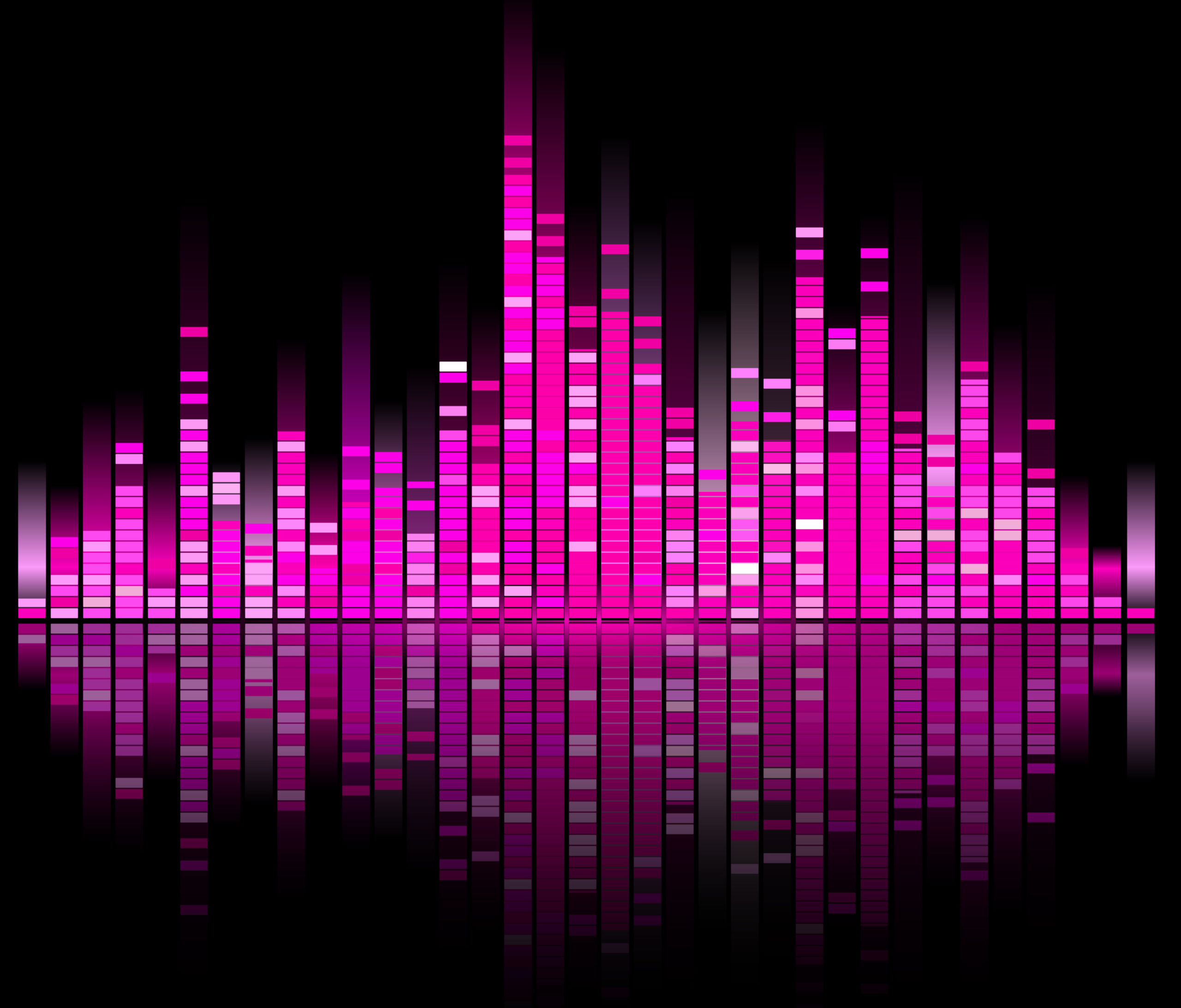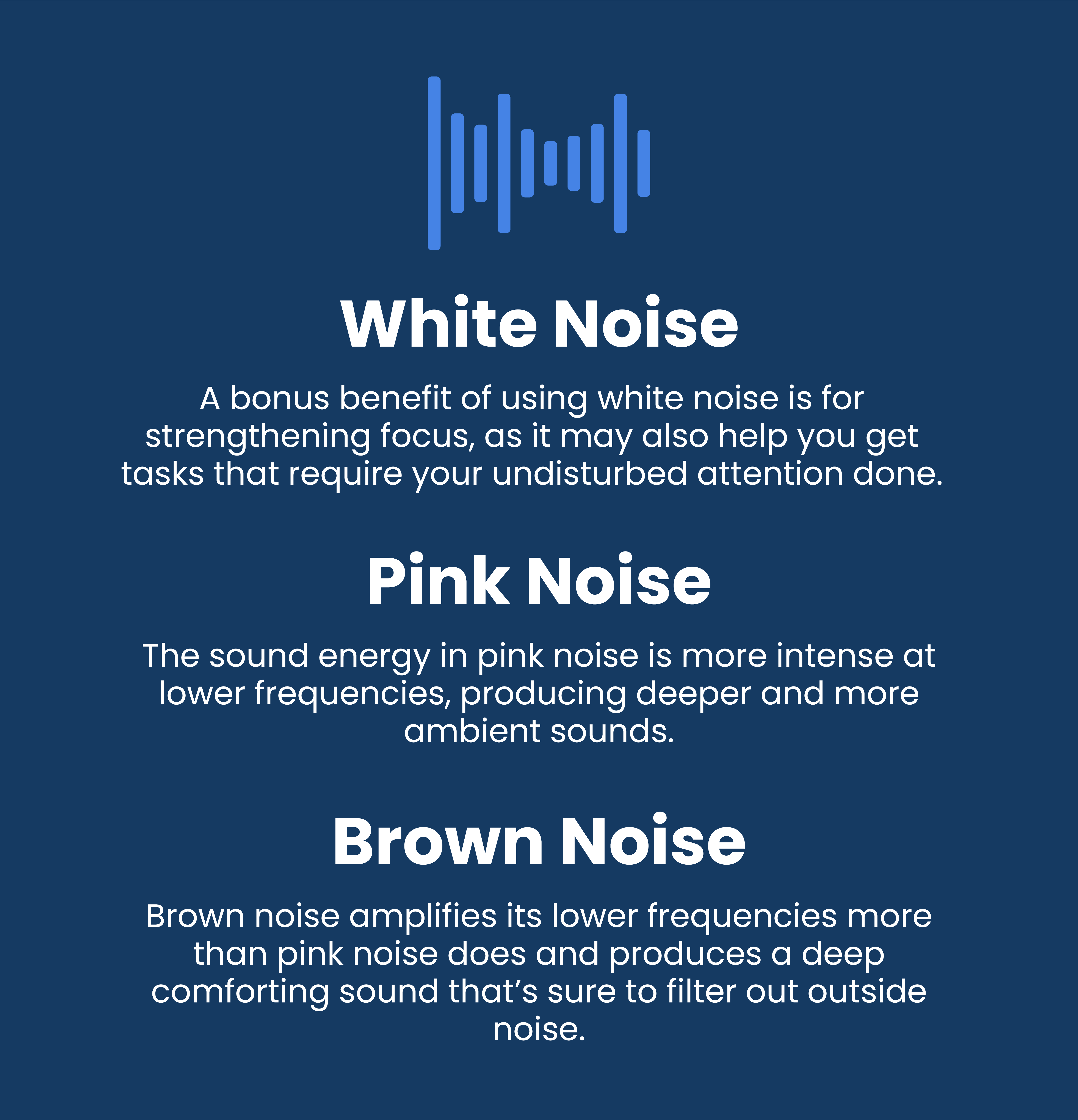White Noise vs Pink Noise (Versus Brown Noise)

Most of us have spent a night in a bustling city or other noisy environments where it feels like getting any substantial sleep that night is nothing but a pipe dream. If you do manage to find a slice of silence, it’s often brief and fleeting as more sudden noises jolt you awake
This cycle can continue because your brain is always responsive to sound stimuli. So, even if you successfully get yourself into deep sleep, the sound of a barking dog can bring you back to square one. And although these midnight noises may not always wake you up, they may still adversely affect brain activity and even heart health.
Noise affects sleep duration, sleep architecture (the order of your normal sleep cycle), and sleep quality. Evidence shows that people who experience excessive nighttime noise may experience crankiness, drowsiness, tiredness during the day, and impaired physical and cognitive performance. A 2015 study suggests that disturbed sleep in duration and continuity affects many physiological processes, including appetite regulation, metabolism, hormone production, and daytime alertness. What’s more, another study suggests that uninterrupted sleep is more important for memory consolidation than the total duration of your sleep.
So, even if you’re regularly getting the recommended seven or more hours of sleep, if there are regular interruptions due to nighttime noise, your body may not be getting the recharging benefits it needs to function optimally during the day.
What may save you from the sleep-draining effects of nighttime noise is colored noise—white noise, pink noise, and brown noise. These kinds of sounds shield your ears from the different variations of sudden noise that disrupt your relaxation as your brain becomes less receptive to them.
Best noise for sleep?
As counterintuitive as it may seem, certain sounds can be helpful to your Zzzs! Colored noise may be a great solution to getting peaceful sleep when you live in a loud neighborhood.
Here’s how it works: Colored noises create a uniform background sound that doesn’t trigger a specific reaction from the brain. They protect your ears from other forms of disruptive noise by masking them, so your brain doesn’t pick them up (this is what can disturb your sleep.)
Here’s a lowdown of the three different kinds of noise that may support uninterrupted sleep and put you on a path of greater wellbeing.

White noise for sleep
White noise is an oft-talked-about sleep intervention among sleep experts, and for good reason! This specific noise kind contains equal amounts of all audible sound frequencies (20 to 20,000 hertz). It’s called white noise because it bears the same feature as white, which has all visible wavelengths of light.
Because white noise carries all the sound frequencies you can hear in equal volumes, it effectively blocks out external noise. But, it emphasizes high-frequency sound energy, which makes it sound unpleasant to some. Regardless, numerous studies affirm its ability to support undisturbed sleep.
A 2017 study published in Frontiers in Neurology investigated the impact of white noise on how quickly a person falls asleep, their sleep cycle, and sleep quality. The results found that white noise may reduce the time difference between wake time and stage 2 sleep by 38%, improve sleep quality, and support sleep health in some people who have trouble sleeping at home. Similarly, a 2021 study suggests that white noise may improve sleep quality for hospital patients.
Another study identified white noise, sleep hygiene, and circadian rhythm management as practical tools for promoting optimal sleep for people with sleep problems. Likewise, an older study suggests white noise is a viable stand-alone treatment for helping toddlers fall asleep quickly and managing nighttime awakeness.
And for our specific context—living in a loud environment, like a neighborhood in New York City—another 2021 study suggests that white noise may lessen the harmful effects of living in this type of environment and improve sleep duration and quality. What’s more, some of the benefits of this sleep aid persist even when you stop using it.
A bonus benefit of using white noise is for strengthening focus, as it may also help you get tasks that require your undisturbed attention done.
Pink noise for Sleep
Pink noise is a less popular kind of colored noise and is often mixed up with white noise. But it may be a preferred tool for masking out unwanted noise and supporting healthy sleep when compared to white noise. Unlike white noise, it doesn’t produce that high-pitched sound that may be distinct and harsh to some, and it represents all frequencies that humans can hear but in different volumes.
The sound energy in pink noise is more intense at lower frequencies, producing deeper and more ambient sounds, making it more relaxing and soothing to the ear (humans are less sensitive to lower frequencies).
You can find pink noise in many nature sounds, like the sound of rustling leaves, rainfall, the wind, and beach waves.
Although only a few scientific studies explore the potential effects of pink noise on sleep, some studies suggest that it can be just as impactful as white noise.
A 2012 study testing the effect of pink noise on brain activity and sleep stability found that pink noise may significantly reduce brain wave complexity and support stable sleep
Also, a 2017 study published in Frontiers in human neuroscience found that pulses of pink noise (acoustic stimulation) may consolidate deep sleep and enhance sleep-dependent memory retention in older adults. Similarly, an older study also suggests that pink noise may help some people fall asleep faster.
Although pink noise may not sound bright like its name, its calming sounds may work well to unwind your body and mind, potentially supporting your overall sleep health.
Brown noise for sleep
Brown noise comes from a 19th-century botanist, Robert Brown, who discovered Brownian motion (random particle motion). It’s the least popular of the three colored sounds, and its effectiveness on sleep is mainly anecdotal evidence. Although there are claims that it’s the most relaxing of the three sounds, more research is needed to understand how brown noise affects sleep.
Brown noise amplifies its lower frequencies more than pink noise does and produces a deep comforting sound that’s sure to filter out outside noise and potentially ease your body for improved sleep.
Using noise to shield yourself from other noise may seem counterintuitive. Still, the inherent characteristics of these types of noise can often give you the comforting and restful sleep your body deserves regardless of your sleep environment. You may try listening to one of these types of noise from a noise machine or sleep sound apps if you are indifferent about sleeping in perfect silence or you have trouble sleeping well.
White noise, pink noise, and brown noise may be functional tools to aid restful sleep. But try not to underestimate the importance of having overall healthy sleep hygiene. These habits work side by side with these tools to ensure your body always gets total rejuvenation every night.
SleepScore Labs Solutions
Download the free SleepScore App for insights and articles on how well you sleep, the quality and quantity of your sleep cycles, and sleep improvement progress with science-backed tips and insights. Download it for free from App Store and Google Play Store!
You can also visit the SleepScore Store for a wide range of sleep-promoting products carefully curated by SleepScore Labs’ team of researchers including white noise machines, lighting solutions, and more to support your sleep-wake schedule!
Sleep well!